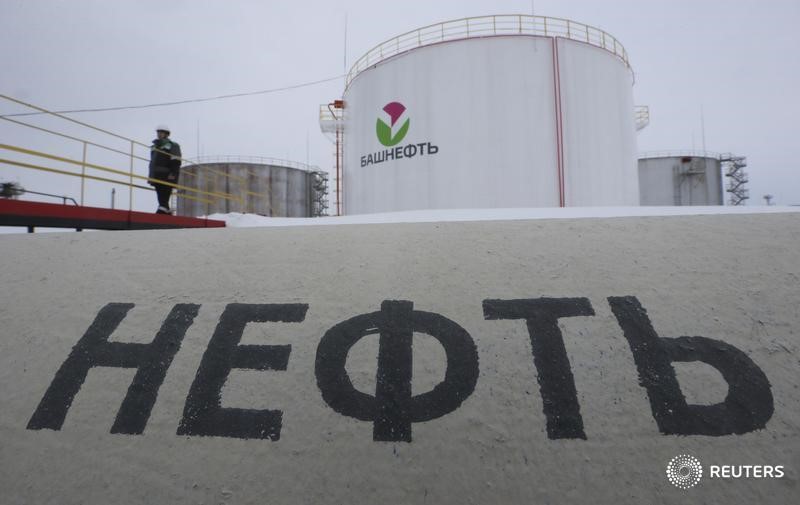JPMorgan’s Dimon weighs in on potential Fed chair candidates
(Bloomberg) -- Russia’s oil output in August is set to decline for the first time in four months amid lower flows from a group of smaller liquids producers, which include Gazprom PJSC (OTC:OGZPY).
The nation pumped an average 10.56 million barrels a day of crude oil and condensate from Aug. 1 to Aug. 23, according to calculations based on data from the Energy Ministry’s CDU-TEK unit seen by Bloomberg. That’s about 1.9% below the July level, the data and last month’s figures obtained by Russian newspaper Kommersant show.
Oil watchers are following Russian oil-production trends amid the world’s worst energy crisis in decades. Western nations and their allies have imposed several waves of sanctions against Russia in retaliation for its invasion of Ukraine, aiming to reduce the Kremlin’s energy revenues.
The restrictions so far have had only a limited effect on the nation’s oil output as Russian producers have been able to redirect their exports from Europe to Asia, where buyers have been less prone to self-sanctioning and eagerly snapped the extra cargoes.
The bulk of barrels cut so far in August came from smaller Russian oil producers, including natural gas exporter Gazprom (MCX:GAZP), the data shows. The CDU-TEK figures don’t provide an output breakdown within the group, making it difficult to pinpoint the source of the decline.
The Russian gas giant has until recently cut its gas output amid lower exports to the European Union, historically its single biggest market. As the producer pumps not only gas but also condensate, a type of light oil, the lower pipeline flows to Europe could lead to a decline in Gazprom’s condensate volumes as well.
Brief Rebound
Russia’s oil output so far this month is still higher than the first days of August, when it averaged some 10.51 million barrels per day. The increase coincided with a hike in Gazprom’s output.
In the first half of August, the gas giant raised its average daily production for the first time since January, potentially due to higher exports to China. If Gazprom continues its output hike ahead of the heating season, it may support Russia’s oil production in the coming weeks.
Russia’s oil output is set to fall roughly 20% by the start of next year as an EU ban on most Russian crude imports comes into force, the International Energy Agency said earlier this month. Other analysts expect the nation’s production to show better resilience.
The volumes may fall to about 10.5 million a day when the EU ban starts in December, according to estimates by data firm Kpler, while analysts at Rystad Energy AS see some 10.1 million a day by year-end.
©2022 Bloomberg L.P.
